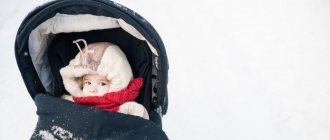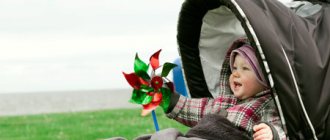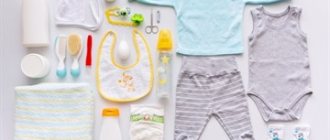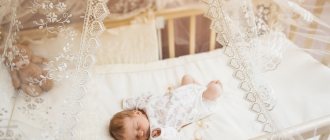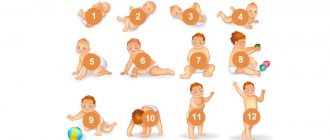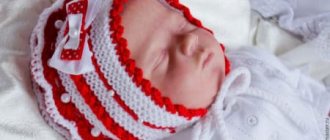Children's doctors argue on many issues. From different pediatricians you can hear completely different recommendations on nutrition, regimen and standards of child development. But there is a rule regarding which all doctors have the same opinion: at any age, a child needs to spend as much time as possible in the fresh air. And in the cold season too - even if you live in a region with harsh winters, the main thing is to know how to dress your child in winter so that he does not freeze or overheat.
Winter walks are very beneficial for a child’s body: they strengthen the immune system, reducing the risk of getting sick, help establish a routine and broaden the child’s horizons. But parents - especially young ones - often deprive their son or daughter of the joy of winter walks because they do not know what to dress the child in or are afraid of possible illnesses. In fact, there is nothing to be afraid of - it is enough to know how to properly dress a child for a walk, focusing on weather conditions, and then he will receive exceptional pleasure and benefit from the walk, even if the temperature outside is sub-zero!
How to choose winter clothes for a child: nuances and recommendations
How to choose the right winter clothes for a child - simple, proven rules and tips:
Jackets and overalls
When deciding how to dress a child in winter, most mothers and fathers start by choosing a jacket or overalls. This thing is really very important, and in stores there are a large number of models of winter children's outerwear, the differences of which can be difficult to understand.
When choosing a jacket or overalls, pay attention to the insulation. The best modern option is membrane clothing, which is not inferior to natural insulation in its ability to retain heat and, unlike natural materials and cheap synthetics, perfectly repels moisture, “breathes” and does not clump. The label of membrane clothing indicates the amount of insulation: choose 200-250 grams if the winter temperature in your city does not drop below 25 ° C, and more than 280 grams of insulation for very cold winters.
Winter pants
Winter pants - those that come with overalls, or that you buy separately - manufacturers provide less insulation than a jacket. To make your child comfortable outside, choose membrane pants with insulation 1.5-2 times less than that of a jacket. These trousers retain heat well and do not get wet. Another advantage of membrane pants over pants made of other materials is that they repel dirt well; even if the child gets dirty, the stains can be easily wiped off with a paper napkin.
Hats
The most comfortable hats for children under 5-6 years old are balaclavas, or, as they are also called, helmet hats. Balaclavas reliably protect the head and face from the cold, leaving the eyes and sometimes the mouth open. For an older preschooler or schoolchild, you can choose a hat that the child himself will like and will protect from bad weather: fashionable, warm enough, and exactly the right size.
Mittens and gloves
Children's hands also need special protection from cold and winds: it will be more convenient for preschoolers to wear mittens for a walk in the winter so as not to get tangled with their gloved fingers. Gloves are more suitable for schoolchildren outdoors - for example, they make it more convenient to put on a backpack, swing on a swing, and, if necessary, get a phone or keys.
Choose mittens and gloves that are waterproof and warm, made from synthetic materials. If you prefer natural materials, stock up on several pairs of gloves or mittens so that you can replace them when the first pair gets wet.
Shoes
It is advisable to purchase at least two pairs of shoes: one for the case of thaws and slushy weather, the other for a real frosty winter.
What is thermal underwear?
This is underwear designed to conserve heat and better remove moisture.
The air contained in the fabric, in contact with the body, is heated to a comfortable temperature. A protective layer of warm air is created between the skin and the cold street. Natural fabrics are known to absorb body moisture, which is released even when a person stands. To heat it up and bring it outside, a lot of energy is spent - during this time the child will have time to freeze. Thermal underwear allows you to speed up this process many times over. It can be made of polyester, polypropylene, fleece, polartek (thin high-quality fleece), wool, cotton or a combination of these. Special fabrics thermolight and thermolife are also used; these are patented names of synthetic fibers.
When choosing thermal underwear, consider which of its functions is more important to you!
Some models of thermal underwear are designed for intensive moisture removal, but provide almost no heat, while others, on the contrary, provide excellent warmth, but do not remove moisture well. For passive walks (the baby spends a lot of time in the stroller), thermal underwear containing at least 40% natural fabrics is suitable. For active ones, the admixture of synthetics should be overwhelming. Thermal underwear is used only for walking! When indoors, the child needs to be dressed in something natural.
How to wear? On a naked body. Keep in mind: if the child is very active, underwear with wool can have a negative effect on the skin, including allergies.
Care: wash at a temperature not exceeding +40C with soap or washing powder. You can do this manually or in a washing machine on the “gentle” washing cycle with the addition of rinse aid and without spinning.
Thermal underwear for passive (stroller or stroller + a little walking) walks: Guahoo Guahoo Comfort Middle, Guahoo Comfort Light Kids, Guahoo Comfort Heavy Kids, KID′S EXPEDITION.
Thermal underwear for active walks: Guahoo Guahoo Outdoor Middle, Guahoo Guahoo Comfort Heavy, Accapi Junior, DaKine Mid Weight Kids, Craft Basic Kids, Norveg Kids, Kid's Lightweight LS Crew. Kid's Lightweight Bottom, Reima.
How to dress a child using the layering principle
It is better to dress children of any age according to the principle of multi-layering. A child dressed in 3-4 layers of clothing can move more comfortably than a child wearing only a very warm coat, in which it is impossible to turn or bend over. In addition, if you wear several layers of clothing in winter, your child is less likely to overheat and get sick.
The number of layers of winter clothing for a baby depends on the age of the child and how cold it is outside. Children under one year old are usually dressed in 4 layers, and those who have already learned to walk - in 3 layers. If you are in doubt about exactly how many layers you need to put on your child before going outside, follow the rule “as for yourself plus one layer.”
How to properly dress a child using the layering principle:
- The first layer for children over one year old is a thin T-shirt made of semi-synthetic or synthetic fabric with long sleeves or special children's thermal underwear. You should not choose cotton as underwear for actively moving children - despite all the advantages of natural materials, a child in a cotton T-shirt will quickly sweat and freeze due to the fact that the material absorbs moisture well and practically does not release it. For babies who are not yet walking, cotton bodysuits and undershirts, on the contrary, are the best option for the first layer - cotton will not harm sensitive skin.
- The second layer for children over one year old is jackets, sweaters, sweatshirts made of wool, fleece or other dense fabric that do not fit very tightly to the body. Warm suits and onesies that fit in size are suitable for babies.
- The third layer is a winter membrane jacket or overalls for children of any age.
- The fourth layer for children under one year old can be a warm blanket, which you can take with you from home, and additionally insulate the baby, if necessary.
Making a baby's wardrobe for a walk
When thinking about what to wear for a child outside, you should always focus on the weather. Many parents are afraid that he will freeze, so they wrap him in several layers of clothing, warm socks, leggings, etc. As a result, already outside the baby becomes hot and uncomfortable, he cannot move his arms and legs normally. According to pediatricians, it is much easier to overheat a child than to overcool him. For this reason, you need to dress your newborn in such a way that he can move freely. Even if he suddenly gets cold, he will be able to warm up on his own.
In the warm season, you should also dress your child lightly. The main thing is that it is protected from direct sunlight and insects. For this purpose, it is better to use sunscreen, repellents and special mosquito nets for strollers.
What to wear for a child on a summer walk
In summer, you need to dress a newborn based on whether the weather is sunny or cloudy, whether there is wind or not. To avoid overheating, you need to choose light and lightweight clothing made from natural “breathable” fabrics. The list of what you can dress your baby in includes:
- bodysuit,
- lightweight sliders,
- vest,
- t-shirt,
- dress with wide straps.
Parents need to know not only what to wear for their child when going outside, but also what time is best to go for a walk. In summer, it is best to do this in the morning before 11:00 or in the afternoon after 15:00. At this time, the sun's rays are less active. Despite this, the baby's head should be covered with a light hat or cap.
What to wear for a child on a spring and autumn walk
The off-season is famous for its unstable weather, sudden rains and piercing winds. This must be taken into account before dressing your child outside. It is best to adhere to the principle of multi-layering. This means that you need to dress a newborn in three layers of clothing, where:
- the first layer is heat-saving thermal underwear or other underwear;
- the second layer is fleece clothing that retains heat;
- the third layer is a demi-season overalls.
By dressing a newborn according to this principle, you can protect him from overheating and hypothermia, as well as preserve his freedom of movement.
What to wear for a child on a winter walk
In winter, you also need to dress your child using the layering principle.
Only instead of a demi-season overalls you will need winter outerwear, as well as a warm woolen hat and scarf. If the overalls do not have mittens and socks, you need mittens and warm booties. A cover must be placed over the stroller to protect it from wind and precipitation. Knowing how to dress a newborn at different times of the year will make it easier for parents to create their wardrobe. In addition, this will help them enjoy every walk, and the baby will get a good night's sleep and work up an appetite.
How to dress a child in winter
Winter is a contrasting time of year: in December it can rain and the temperature can remain above zero, but in January all the streets will be covered with snow and frosts of thirty degrees will hit. Two main factors that you need to consider before dressing your child for a walk in winter are the weather outside and the age of the boy or girl. Of course, you need to dress a practically motionless newborn and a restless kindergartener differently, no matter what the temperature outside.
How to dress a newborn in winter: for discharge and for walks
When discharged from the maternity hospital, young mothers do not have to dress the baby themselves; the newborn is fully prepared by the medical staff. And this is a big plus, especially in winter and for inexperienced mothers - when there is no dexterity yet, it is quite difficult to properly dress a newly born baby.
But parents will still have to collect all the clothes necessary for the baby. So, what exactly is needed to dress a newborn for discharge in winter:
- a disposable diaper, and it’s better to have a couple more in reserve;
- thin cotton bodysuit: in the case of a baby who was born a few days ago, it is better to avoid synthetics - unnatural materials can rub the baby’s delicate skin;
- scratchy mittens if the bodysuit does not cover the baby’s hands;
- a thick slip made of fleece or velor - you can choose an elegant, festive option;
- one thin and one warm hat - you can do without beautiful caps especially for discharge, an elegant headdress will still be under a warmer cap;
- warm winter overalls: it is better to immediately choose a larger size, for example, for a height of 62 cm, if at birth the baby’s height was 50 cm or more - otherwise the child will not wear the overalls for even a month;
- a winter envelope designed specifically for discharge, or a warm blanket;
- thin and thick socks.
If the child is healthy and there are no contraindications from the pediatrician, you can go for the first walk in winter ten days after discharge. On the street, a newborn is constantly in a stroller and hardly moves, and for the first walk you need to dress your baby at least one layer warmer than you are.
How to dress a baby for the first and all subsequent walks in winter:
- first layer: diaper, thin bodysuit with long sleeves or a cotton vest and romper, thin hat;
- second layer: a tight suit or overalls - knitted, fleece, velor;
- third layer: winter overalls or envelope covering arms and legs, winter hat.
How to dress a child for a walk depending on age and air temperature
A child over a year old, who actively moves, plays and explores the world in a variety of ways, needs to dress completely differently than a baby: outerwear should be loose and not restrict movement, you will need to wear shoes on your feet, but you can forget about the fourth insulating layer.
How to dress children of different ages depending on the outside temperature:
1-3 years
Outside temperature -5...+5 ˚С
Semi-synthetic or synthetic T-shirt with long sleeves, a jacket made of viscose or acrylic with wool, a jumpsuit that can be unbuttoned along the entire length with 200-250 g of insulation, a warm hat, snow boots.
-5…-15 ˚С
Semi-synthetic or synthetic T-shirt with long sleeves, a jacket made of viscose, wool, wool with acrylic, overalls with 250 g insulation, a winter hat, dutik or felt boots.
Below -15˚С
Thermal underwear, a jacket made of wool or wool with acrylic, overalls with 280-400 g of insulation, a warm hat, felt boots.
3-5 years
-5…+5 ˚С
Thermal underwear, a sweater made of viscose, wool or wool with acrylic, walking overalls with up to 250 g of insulation, a medium-density hat, snow boots.
-5…-15 ˚С
Thermal underwear, a sweater made of viscose, wool or wool with acrylic, overalls or a set of jacket and pants with 250 g of insulation, a winter hat, dutik or felt boots.
Below -15˚С
Thermal underwear, a jacket made of wool or wool with acrylic, overalls or jacket and pants with 280-400 g of insulation, a warm hat, felt boots.
5-7 years
-5…+5 ˚С
Thermal underwear, a jacket made of viscose or acrylic with wool, overalls or jacket and pants with 200 g insulation, a medium-density hat, snow boots.
-5…-15 ˚С
Thermal underwear, a jacket made of viscose, wool or acrylic with wool, a set of jacket and pants with 250 g of insulation, a winter hat, dutik or felt boots.
Below -15˚С
Thermal underwear, a sweater made of wool or wool with acrylic, a jacket and pants with 280-400 g insulation, a warm hat, felt boots.
Over 7 years old
-5…+5 ˚С
Thermal underwear, a sweatshirt made of synthetic materials, a membrane jacket and pants with 200 g insulation, a medium-density hat, snow boots.
-5…-15 ˚С
Thermal underwear, a sweatshirt made of viscose or wool with acrylic, a jacket and pants with 250 g insulation, a warm hat, winter boots or boots made of leather with fur, or membrane shoes.
Below -15˚С
Thermal underwear, a sweater made of wool or wool with acrylic, a jacket and pants with 280-400 g insulation, a warm hat, felt boots.
How to dress a child for kindergarten in winter
There are twenty or more children in kindergarten groups, and it is difficult for teachers to ensure that each child is properly dressed before going on a walk. Therefore, ease of use is especially important for the winter clothes of a child attending kindergarten: the jacket, pants and other items of clothing should not have complex fasteners that the child cannot handle without the help of an adult.
How to dress a child in kindergarten in winter so that he is comfortable and warm:
- choose not a one-piece overalls for kindergarten, but a separate set of jacket and pants; it is advisable that the set be of a practical, non-stainable color - a child may get dirty on a walk, and there will be nothing to replace things with;
- It will be convenient for the baby to wear loose, not too tight-fitting clothes without buttons, complex buckles and fasteners;
- Pay attention to shoes: boots or felt boots with laces will be difficult for a small child to put on independently; choose models with Velcro or buttons;
- under warm overalls, wear jackets and sweaters made of fleece or other warm material with a minimum of fasteners;
- You can use thermal underwear or a long-sleeve T-shirt as underwear, and warm tights under your pants;
- remind your child that before going for a walk he needs to put on warm socks over thin socks;
- the hat should be easy to put on - choose a model without ties or a helmet hat for kindergarten;
- The best option for protecting children's hands from the cold during a walk in the kindergarten is Bolognese mittens or gloves; they retain heat well, do not allow moisture to pass through and are easy to put on;
- Put spare mittens and a scarf in your child’s locker - these are the things that are especially often lost during walks in child care facilities.
Don't worry about your child when he is in kindergarten. Make sure he feels good, doesn't have problems adjusting, and isn't bullied. Buy a children's GPS watch with the Surround Sound function on our official website and receive a “Where are my children” license as a gift. Double savings!
Head
The undisputed leader among ways to insulate the head in cold weather is a hat-helmet. It combines a hat and a warm bib, protects not only the head, but also the ears and neck of the child from the cold, does not fall off and, if necessary, easily fits under the hood. When choosing a helmet hat, pay attention to seasonality (there are autumn and winter hats). Some hats have additional thickenings in the area of the ears, which further protect them from blowing. Here are some examples of helmets for children of different ages: first, second and third.
How to understand that a child is dressed incorrectly
You can understand that your child is cold or, conversely, overheated, by certain signs:
- Touch the baby's hands and, if possible, the legs - if the limbs are cold, it means the baby is cold. Put on extra socks or cover your child with a blanket if he is walking in a stroller.
- Other signs that the child is cold: whims for no apparent reason, lethargy, too pale face. In these cases, it is better to immediately take the boy or girl to a warm place.
- If you notice that the child is flushed and sweating, the baby is most likely overheated. Get home before your sweaty child starts to freeze.
- When a child is constantly thirsty, he is probably too hot. If possible, remove excess clothing and continue walking.
If you notice signs that your baby is overheated or too cold, the next time the weather conditions are the same, remove an extra layer of clothing or add another layer.
Allergy to cold
Cold itself is not an allergen, because an allergy is a reaction to a foreign protein. For some people, when going out into the cold, their own proteins form a structure that the body's defense system mistakenly takes for someone else's - as if an allergen had invaded. Also, an allergy to cold can manifest itself in the form of ongoing chronic tonsillitis (inflammation of the tonsils). Our lymph system is always on guard, protecting the body from germs and bacteria. If the immune system is weakened from birth (causes: complicated pregnancy, artificial feeding, etc.), it cannot cope with all the blows and itself becomes the cause of disease. The solution is the same - the child needs to be strengthened, not protected. Without getting used to the cold, illnesses will only get worse. The mother urgently needs to clear her head of bad thoughts that inevitably appear against the backdrop of the child’s constant illnesses. The child needs this, first of all, to tune in to a new life, because his mental connection with his mother is very strong. If a mother is afraid to take her child out into the cold, he perfectly feels her tension - and his body is even more afraid. In case of skin rashes (due to allergies to cold), you need to make sure at home that the “skin” immunity does not go astray: moisturize the skin after bathing, do not use soap (it is better to use special cosmetics for dry skin). Use a nourishing, rich cream when going outside, lubricating not only your face, but also your hands.
How to dress if you are allergic to cold? The child must be completely “packed”: the overalls cover the throat, adjustable valves on the sleeves and legs, waterproof mittens that prevent the hands from getting wet and getting cold.
Winter shoes
It’s unlikely that you can get by with just one pair of shoes in the winter. For slushy rainy days, prepare snow boots or boots made of EVA for your child: these shoes are made of thermal rubber and are additionally insulated, the child’s feet will remain dry and warm.
For frosty winters, membrane shoes, boots made of leather with fur, felt boots or ugg boots are suitable.
What to look for when choosing winter shoes for your child:
- shoes should be the right size, neither big nor small: check whether the baby can move his toes freely when he is wearing them, and whether there is a risk that the shoes or boots will fall off his feet;
- choose models without laces, with simple fasteners;
- check the sole: good shoes should have flexible soles, and to ensure that the baby is not slippery, patterns should be applied to the sole;
- removable insole is an additional plus for winter shoes;
- try to choose models from a manufacturer you know; if you are hearing the brand name for the first time, do not hesitate to ask the seller for a quality certificate.
Walking with a newborn and baby: winter baby
If your baby was born in winter, the duration of the first walk should be no more than 15 minutes. When can you go outside? It depends on the condition of the baby, if he was born healthy, we go for a walk a week after birth. The child must not only get used to the street: he must get used to the stroller, temperature changes, and simply to being separated from his mother. We gradually increase the walk to two hours a day at an air temperature of −10 degrees. At lower temperatures, you can go out for an hour - or sleep on the balcony. A winter stroller is good protection from the wind: do not wrap your child up, do not put on a hood unnecessarily, overheating of the head leads to neurological problems. A child in a winter stroller cannot use a hood at any temperature outside. Be sure to lower the hood of the stroller for a while so that the child gets a boost of vitamin D: the sun is always there, it shines even through the clouds. For short walks, use a sling or baby carrier. You can dress a baby in a sling more lightly, because he warms himself against his mother. A child who is pressed to his mother cannot freeze, this is an ancient truth. Clothing should be natural; a child under one to one and a half years old does not need a membrane, which means that synthetics will not be required (with the exception of fleece). Child up to 3 months. It can go down to minus 15 degrees.
Clothes for newborns
- A little person from birth to 1 year
will need a warm down envelope. The Finnish brand Kerry produces very beautiful products with a soft velor lining. The hood and cuffs are lined with elastic bands. The palms are closed with soft cuffs. - For children from 3 to 6 months,
envelopes with sleeves and a hood are produced, which give the baby greater freedom of movement to explore the world around him. - Newborns from 6 months to 1 year
will need warm boots and mittens. Pants can be replaced with tights. - Rule of 3 layers: The first layer includes diaper, romper, vest, cap. The second is pants with a blouse. The third is overalls, hat, scarf. Next, we wrap the baby in an envelope.
